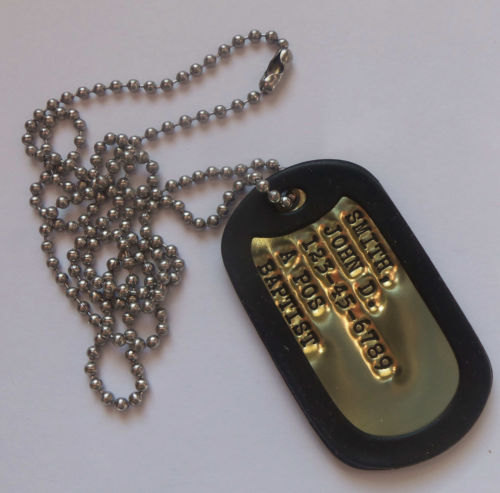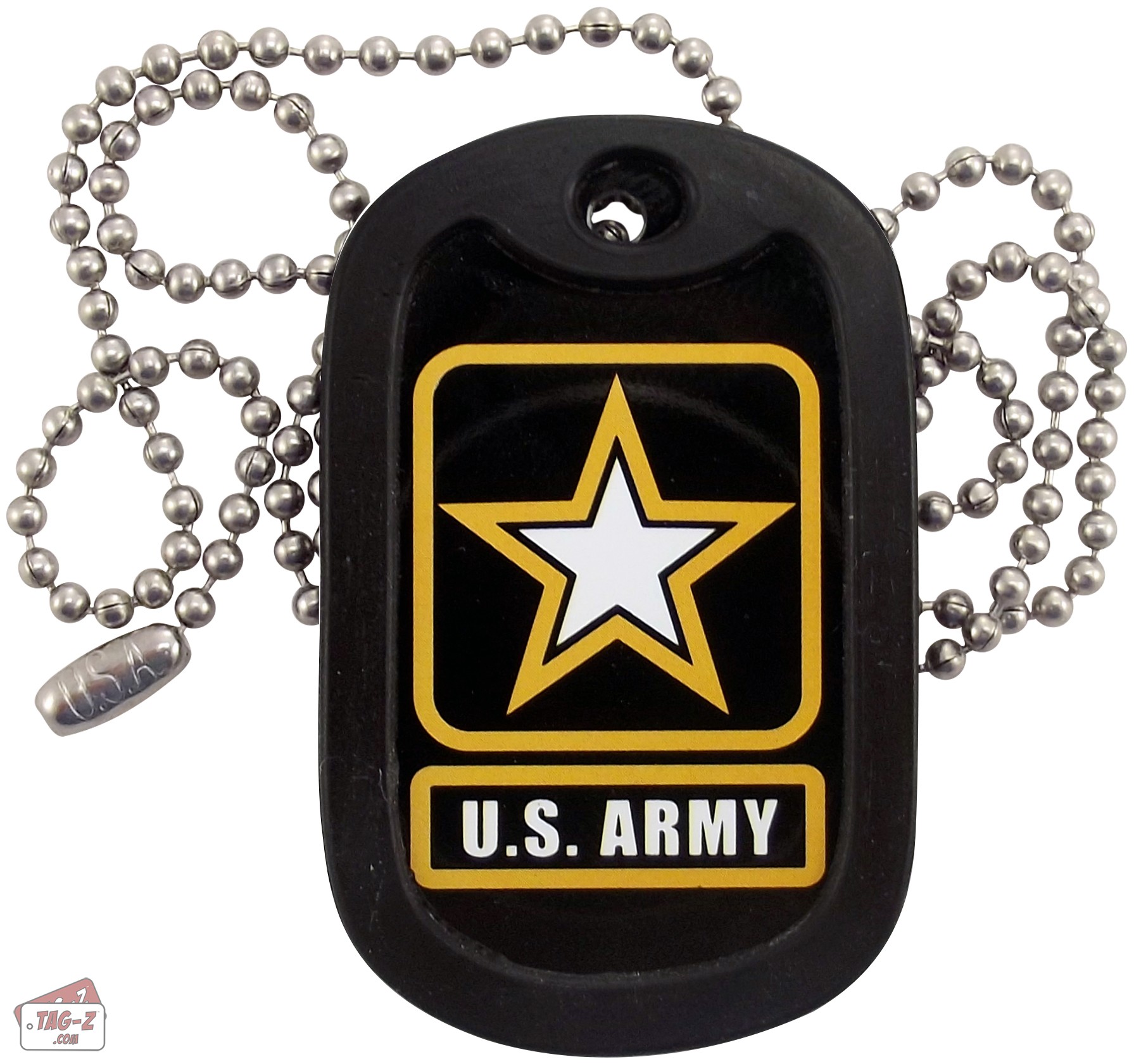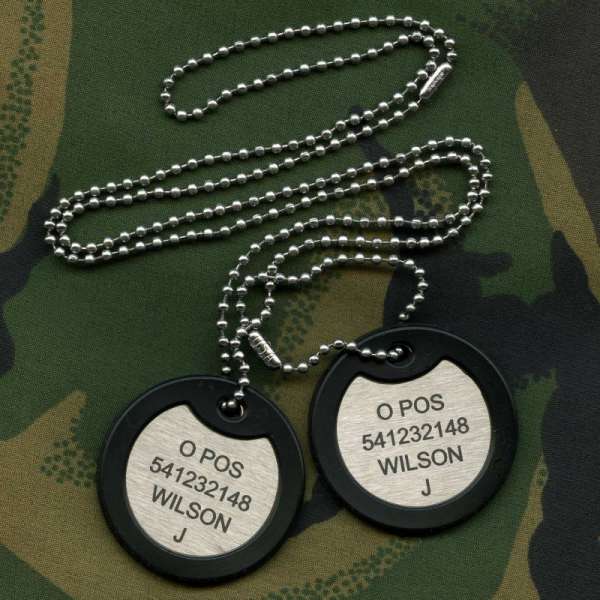

In October of 1938 the start of tests for a new identification tags started, and by 1940 it was adopted. First made of brass and then a "Monel" metal (a patented corrosion-resistant alloy of nickel and copper, melted with small amounts of iron and manganese) proved to be more corrosion resistant. Next in the evolution of dog tags came what is known as the Navy/Marine style a more oblong shape with more uniform printing.
ARMY DOG TAGS SERIAL NUMBERS
In February of 1918 the official introduction of Serial Numbers started. In July of 1916 a second tag was added, and by 1917 all combat troops wore aluminum discs on rope or chain. Pierce recommended that a "identity disc" be included in the standard combat field kit, though the first official introduction didn't happen until December of 1906.The Army Regulations of 1913 made a identification tag mandatory. The first official advocacy of issuing a ID tag took place in 1899. Soldiers also fashioned coins by scraping one side smooth and engraving or stamping name and unit. Some troops made their own ID s out of wood, boring a hole in the end so that they could be worn on a string. Many soldiers took great care in marking all of their personal belongings.

In 1863, before the battle of Mines Run in northern Virginia, troops wrote their names and units on a paper tag and pinned them to their clothing. Their identification tags methods varied, and all were taken on by the soldier's own initiative. The history of American Civil War (1861-65) provided the first recorded incident of soldiers making an effort to ensure that their identification would be known should they be killed on the battlefield. As a result, it became a practice for soldiers on both sides to pin a handkerchief or piece of paper with their names and addresses to their uniforms just before battle.

The carnage was so great and bodies were so disfigured that they sometimes could not be identified (history tells us that 40% of all Civil War dead remain unknown). Some of these marks would go on to become vital identifying factors used by Allied prosecutors during war crimes trials that ensued in the years after World War II.The history behind military identification tags, commonly known as "dog tags," originated during the Civil War. “The tattoo is placed on the body near a person’s armpit so that it will be both inconspicuous and less likely to be obliterated in case of injury,” reads a 1951 Chicago Daily Tribune article about an initiative to ink the approximately 200,000 residents of Lake County, Indiana.Ī few years before the Cold War’s nuclear hysteria petrified the world, Nazi SS soldiers were being tattooed - also near the armpit - with a small mark that identified individual blood type. In the context of modern history, nuclear threats during the Cold War prompted numerous cities to consider large-scale tattooing of blood types on men, women and children, a measure intended to expedite on-the-spot blood transfusions in the event of an atomic blast. I’m doing God’s work here.”ĭivine toiling aside, tattooed forms of identification have existed in some form for millennia. That’s why we have a memorial to the unknowns, right? Couldn’t identify them. “Meat tags are so they can make it home, no matter what,” tattoo artist Jesse Mays previously told BBC about inking Marines from Camp Lejeune. Meat tags have been styled as simple lines of text, as the shape of a dog tag or even designed to look like a dog tag chain protruding through splayed skin.

Such tattoos became immensely popular among troops in the Iraq and Afghanistan wars, even acting as a right of passage for many young service members attached to combat-destined units. Wearers often position the tattoo high on the ribcage, an area less prone to gruesome injury than the extremities, to allow others to identify them in the event their remains are unrecognizable - and the physical dog tag laced into one’s left boot is nowhere to be found. The ink, colloquially known as a “meat tag,” is traditionally tattooed with the identification - and oftentimes the blood type - of an individual anticipating combat. personnel who have ventured into tattoo shops with similar, albeit more optimistic, requests. And while Zelenskyy’s statement will undoubtedly douse gasoline onto Ukraine’s already-roaring propaganda inferno, the suggestion is not abnormal in the context of military tattoo history and may even conjure memories for scores of U.S.


 0 kommentar(er)
0 kommentar(er)
